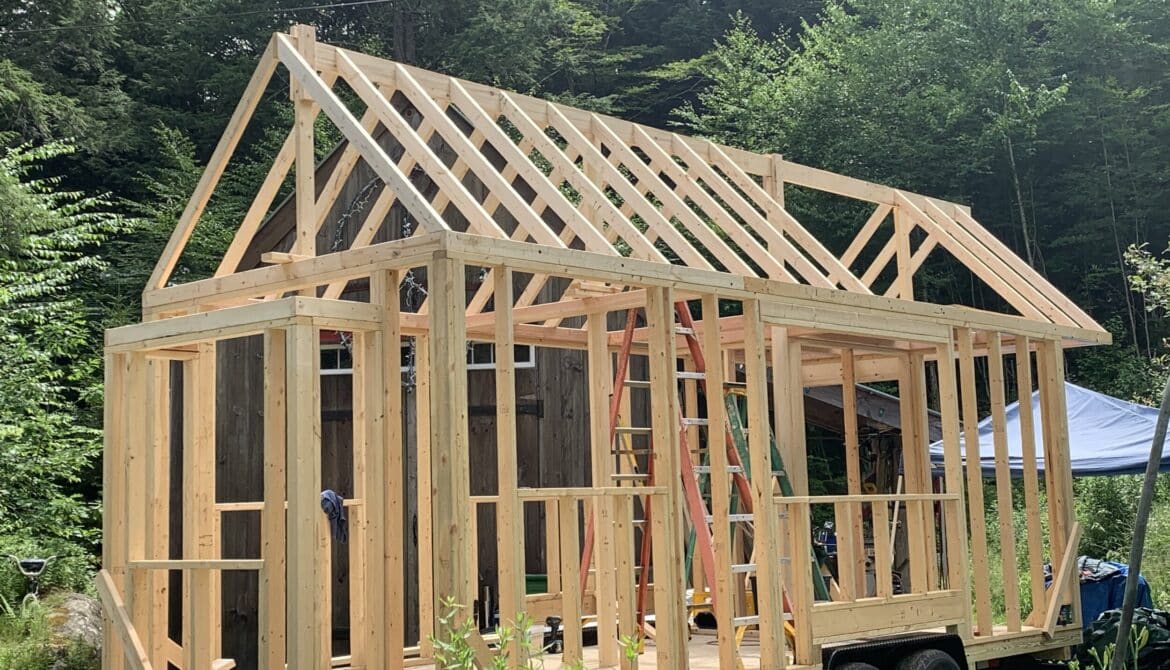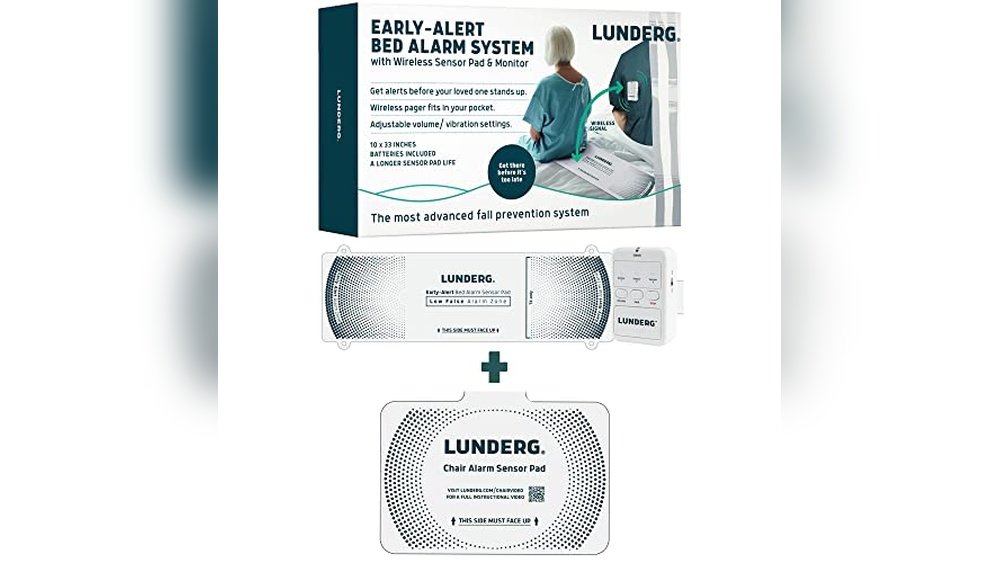Imagine living in a space that perfectly embodies simplicity, efficiency, and coziness. A tiny house offers you just that—a lifestyle that prioritizes what truly matters.
If you’re dreaming of building a tiny house, you might wonder where to start. You might feel a mix of excitement and uncertainty as you consider downsizing and embracing a minimalist way of living. This article will guide you through the essential steps to construct a tiny house, ensuring that every decision leads to a space that’s both functional and personal.
Whether you’re motivated by financial freedom, environmental concerns, or the desire for a simpler life, the process of building your tiny house can be an empowering journey. Curious to know how? Let’s dive in and explore how you can turn your tiny house dream into reality.
Planning And Design
Building a tiny house starts with thoughtful planning and design. These steps are crucial for creating a space that meets your needs. Successful planning leads to a home that maximizes comfort and functionality. It’s important to focus on defining your needs, choosing a layout, and creating blueprints.
Defining Your Needs
Begin by listing what you need in your tiny house. Consider the number of people living there. Think about your lifestyle and hobbies. Do you need space for a home office? What about storage for sports equipment? Identifying these needs helps in designing a practical space.
Choosing A Layout
Once your needs are clear, choose a suitable layout. Open layouts feel spacious and airy. Separate rooms provide privacy. Think about traffic flow and accessibility. Make sure the layout supports your daily activities. This helps in creating a comfortable living environment.
Creating Blueprints
Creating blueprints is the next step. Detailed drawings guide construction. They include dimensions and specifications. Visualize each room and its features. Use software tools or hire a professional. Accurate blueprints ensure the house is built as planned.
Budgeting And Financing
Building a tiny house can be a thrilling adventure. It offers freedom and simplicity. Yet, managing costs is crucial. Careful budgeting ensures a smooth construction process. Financing options vary widely. Smart choices can ease financial strain.
Estimating Costs
Start with a detailed plan. Consider materials, labor, and design. Each factor impacts the total cost. A simple design costs less. Custom features may increase expenses. Research market prices for materials. This helps in setting realistic expectations.
Funding Options
There are several ways to finance your tiny house. Savings offer complete control over your budget. Personal loans provide flexibility. Some opt for RV loans. Crowdfunding might be a creative solution. Explore each option thoroughly before deciding.
Cost-saving Tips
Reuse materials to reduce costs. Look for discounts on bulk purchases. Consider doing some work yourself. This saves labor expenses. Plan for energy-efficient designs. They lower long-term utility costs. Avoid unnecessary features to keep spending in check.
Materials And Tools
Building a tiny house requires specific materials and tools. Essential items include wood, nails, and screws. Tools like hammers, saws, and drills are important. These components help create a sturdy and functional living space. Proper use of these items ensures a safe and efficient construction process.
When constructing a tiny house, materials and tools are crucial. Selecting the right materials ensures durability. The right tools make the process efficient. This section will guide you through essential materials and tools.Essential Building Materials
The base of your tiny house needs sturdy wood. Pine and cedar are popular choices. They are strong and weather-resistant. For the frame, use treated lumber. It withstands moisture and pests. Insulation is vital for comfort. Foam board and spray foam are effective. They help maintain temperature. For roofing, metal sheets are durable. They protect against harsh weather. Inside, use plywood for walls. It’s versatile and easy to paint. Flooring can be vinyl or laminate. Both are affordable and easy to clean.Tool Checklist
Building a tiny house requires key tools. A hammer is fundamental for nailing tasks. A power drill speeds up construction. It’s perfect for screws and bolts. Circular saws cut wood precisely. Measuring tape ensures accuracy. A level checks for even surfaces. Safety gear is necessary. Gloves and goggles protect from harm. A utility knife is versatile. It cuts various materials smoothly. Keep a toolbox handy. It organizes all your tools efficiently.Sourcing Sustainable Materials
Sustainable materials benefit the environment. Reclaimed wood is a great choice. It gives a rustic look and reduces waste. Bamboo is another option. It’s fast-growing and renewable. Recycled metal for roofing is eco-friendly. It saves resources and energy. Use low-VOC paints for healthier air. They release fewer chemicals. Check local suppliers for sustainable options. This reduces transportation emissions. Consider second-hand stores for unique finds. They offer budget-friendly and unique items.Site Preparation
Embarking on the journey to construct a tiny house is thrilling. The first step is site preparation. This foundation ensures your tiny home sits securely and comfortably. It involves selecting the right location, preparing the ground, and setting up utilities. This phase is crucial for a successful tiny house project.
Selecting A Location
Choose a spot that suits your lifestyle. Consider proximity to work, schools, or nature. Assess the climate and weather conditions. Ensure the site is safe from floods or landslides. Check local zoning laws and regulations. This ensures your tiny house complies with legal standards.
Preparing The Ground
Start by clearing the land. Remove debris, rocks, and vegetation. Level the ground to create a stable base. Consider soil type for foundation strength. Clay and sand may require extra work. Compact the soil to prevent future settling.
Setting Up Utilities
Plan for electricity, water, and sewage connections. Determine if solar panels are feasible. Consider rainwater collection for sustainability. Ensure access to waste disposal systems. These utilities make daily life comfortable and convenient.
Foundation Construction
Building a tiny house is an exciting journey. The foundation is the first step in this journey. It provides stability and support to your home. A strong foundation ensures your house stands firm. Let’s explore how to construct a tiny house foundation.
Types Of Foundations
Tiny houses can have different foundation types. The most common are trailers and concrete slabs. Trailers are popular for mobility. They allow easy relocation of your tiny house. Concrete slabs provide a permanent base. They are solid and durable. Each type has its own benefits. Choose based on your needs and budget.
Building The Foundation
Start by preparing the site. Clear debris and level the ground. For a trailer, ensure it is sturdy and well-maintained. Attach the house frame securely. For a concrete slab, pour the mix evenly. Use a trowel to smooth the surface. Allow time for the concrete to cure. This step is crucial for stability.
Insulation Considerations
Insulation is vital for energy efficiency. It helps maintain a comfortable temperature. For trailers, use spray foam insulation. It fits snugly in tight spaces. For concrete slabs, consider rigid foam boards. Place them beneath the slab. They prevent heat loss. Good insulation saves energy and money.

Credit: www.bigrentz.com
Framing The Structure
Building a tiny house starts with a solid frame. Use quality materials like timber or steel for durability. Precise measurements ensure everything fits perfectly, creating a sturdy base for your compact home.
Building the frame of a tiny house is crucial. It serves as the skeleton and supports the entire structure. A well-framed tiny house ensures durability and safety. This process involves precise measurements and sturdy materials. Focus on creating a solid base before adding any features. Framing requires attention to detail and a clear plan. Let’s explore the essentials of framing a tiny house.Wall Framing Techniques
Wall framing involves assembling vertical supports called studs. These studs hold up the walls and roof. Begin by measuring the dimensions of your tiny house. Cut wood pieces to fit these measurements. Arrange studs evenly across the wall’s length. Nail them securely for stability. Use a level to check alignment. Horizontal beams known as top and bottom plates connect the studs. Ensure they fit snugly to avoid gaps. Double-check each measurement for accuracy. Strong walls provide a firm foundation.Roof Construction
The roof is vital for protecting against weather. Start by selecting durable materials like shingles or metal. Design the roof with a slight slope to drain water. Build trusses to support the roof’s weight. Trusses are triangular frameworks placed at intervals. Secure them firmly to the top plates. Cover the trusses with plywood sheathing. This sheathing forms the base for roofing materials. Apply a waterproof barrier over the sheathing. Finish with your chosen roofing material. A well-constructed roof offers long-term protection.Window And Door Placement
Windows and doors bring light and access. Plan their placement carefully for best results. Choose areas with good sunlight for windows. Measure openings before framing them. Use headers to distribute weight above windows and doors. Install rough openings slightly larger than the actual size. This allows for adjustments during installation. Secure framing around these openings tightly. Ensure windows and doors fit correctly within the frames. Proper placement enhances both appearance and function. A bright, accessible tiny house feels inviting.Exterior Finishing
Exterior finishing is crucial in tiny house construction. It protects the structure and gives it character. A well-chosen exterior finish enhances curb appeal and ensures longevity. This section explores key aspects of exterior finishing. Discover siding options, roofing materials, and weatherproofing techniques.
Siding Options
Siding impacts the look and durability of your tiny house. Wood siding offers a classic appearance. It requires regular maintenance to prevent rot. Vinyl siding is durable and low-maintenance. It comes in various colors and styles. Metal siding is robust and modern. It resists pests and weather damage. Consider fiber cement siding for fire resistance. It’s also great for termite protection.
Roofing Materials
Roofing materials protect your tiny house from the elements. Asphalt shingles are affordable and easy to install. Metal roofing lasts long and reflects heat. It’s ideal for energy efficiency. Cedar shingles provide a rustic look. They’re naturally resistant to decay. Rubber roofing is lightweight and waterproof. It’s suitable for tiny houses on wheels. Choose materials based on climate and budget.
Weatherproofing
Weatherproofing safeguards your tiny house against moisture. Seal gaps around windows and doors. Use weatherstripping to prevent air leaks. Apply waterproof membranes on the roof. They prevent water penetration. Install gutters to direct rainwater away. Insulate walls for temperature control. Proper weatherproofing increases comfort and reduces energy costs.
Interior Layout
Creating a cozy interior layout for a tiny house requires thoughtful planning. Every square inch counts. You need to balance comfort with functionality. This involves smart space utilization, efficient kitchen and bathroom designs, and clever storage solutions. Each aspect is crucial for maximizing the limited space available. Let’s delve into these key components.
Space Optimization
Space optimization is the core of tiny house design. Use multifunctional furniture. A sofa bed can serve dual purposes. Choose foldable tables for dining or work. Keep pathways clear for easy movement. Use vertical space. Install shelves and hooks on walls. They provide extra storage without cluttering the floor.
Kitchen And Bathroom Design
The kitchen and bathroom need special attention in a tiny house. A compact kitchen can still be fully functional. Use a single-basin sink to save space. Install a two-burner stove. Optimize under-sink storage with pull-out drawers. In the bathroom, use a corner shower to save space. A wall-mounted toilet can free up floor area.
Storage Solutions
Storage is essential in a tiny house. Use every nook and cranny. Built-in storage can be part of the furniture. Beds with drawers underneath offer hidden storage. Use over-door racks for additional space. Baskets and bins can keep items organized. Label containers to find items easily.
Electrical And Plumbing
Building a tiny house is an exciting journey. The electrical and plumbing systems are crucial elements of this adventure. These systems make your tiny house functional and comfortable. Proper installation ensures safety and efficiency. Let’s dive into the key aspects of electrical and plumbing.
Wiring Basics
Wiring in a tiny house requires careful planning. Start with a clear layout of your electrical needs. Include outlets, lights, and appliances. Use quality wires suitable for your power demands. Follow local building codes for safety. Consider hiring a professional for complex tasks.
Use a junction box for connections. It protects wires from damage. Label circuits for easy maintenance. A circuit breaker prevents overloads. It’s a must for safety. Check the wiring regularly to ensure it’s intact.
Plumbing Installation
Plumbing in a tiny house involves water supply and waste management. Start with a blueprint of the water system. Include sinks, showers, and toilets. Use durable pipes to prevent leaks. Choose flexible pipes for easy installation.
Install a water heater if you need hot water. Connect it to your plumbing system. Ensure proper drainage to avoid blockages. A vent system keeps your plumbing efficient. Test the entire setup to check for leaks.
Safety Measures
Safety is vital in electrical and plumbing installations. Use protective gear during installations. Ensure all connections are secure. Avoid using water near electrical outlets. Install ground fault circuit interrupters (GFCIs). They protect against electrical shocks.
Regular inspections keep systems safe. Check for signs of wear and tear. Address issues immediately to prevent hazards. Use smoke detectors and carbon monoxide alarms. They add an extra layer of safety. Prioritize safety in every step.

Credit: unitedtinyhomes.com
Final Touches
Completing your tiny house involves adding the final touches. These details make your space feel like home. After construction, focus on creating a cozy, functional environment.
Decorating Tips
Choose light colors to make rooms feel bigger. Use mirrors to reflect light and space. Hang artwork that you love. Opt for plants to bring life indoors. Keep decorations minimal to avoid clutter. Use wall-mounted shelves for displaying items.
Furnishing Ideas
Select multi-functional furniture for versatility. Foldable tables and chairs save space. Choose a sofa bed for guests. Install built-in storage units to maximize space. Use stackable stools for extra seating. Consider modular furniture for flexibility.
Personalizing Your Space
Display personal photos to add warmth. Use textiles like rugs and cushions for comfort. Incorporate your favorite colors into the decor. Add personal mementos or collectibles. Install custom lighting for ambiance. Create a space that reflects your personality.

Credit: news.vanderbilt.edu
Frequently Asked Questions
What Materials Are Best For Tiny House Construction?
When constructing a tiny house, consider using lightweight materials like wood, steel, and aluminum. They offer durability and energy efficiency. Reclaimed or recycled materials can also be cost-effective and eco-friendly. Insulation is crucial for maintaining temperature, so prioritize materials like spray foam or wool.
Select materials based on your budget and environmental impact goals.
How Much Does It Cost To Build A Tiny House?
The cost of building a tiny house can vary widely. On average, a DIY tiny house costs between $10,000 and $30,000. Hiring professionals can increase costs to $50,000 or more. Factors influencing cost include size, materials, and location. Budget planning is essential to manage expenses effectively and prevent overspending.
How Do I Choose A Tiny House Location?
Choosing a location for your tiny house involves considering zoning laws, utilities, and accessibility. Research local regulations to ensure compliance. Access to water, electricity, and waste management is crucial. Consider proximity to amenities like shops and hospitals. Prioritize locations that offer safety and suit your lifestyle preferences.
What Are The Legal Requirements For Tiny Houses?
Legal requirements for tiny houses vary by location. Check local zoning laws and building codes for specific regulations. Some areas may require a minimum square footage or specific foundation types. It’s essential to obtain necessary permits and comply with safety standards.
Consulting with local authorities can help ensure compliance.
Conclusion
Building a tiny house can be a rewarding journey. You learn new skills. Save money. And enjoy a simpler lifestyle. The steps are clear. Plan well. Choose the right materials. Follow the design closely. Make sure to check local rules and regulations.
Safety is important. A tiny house offers flexibility and freedom. It suits many lifestyles. Living small can lead to big happiness. You discover what’s truly essential. Start your tiny house adventure today. Enjoy creating your own cozy space.



